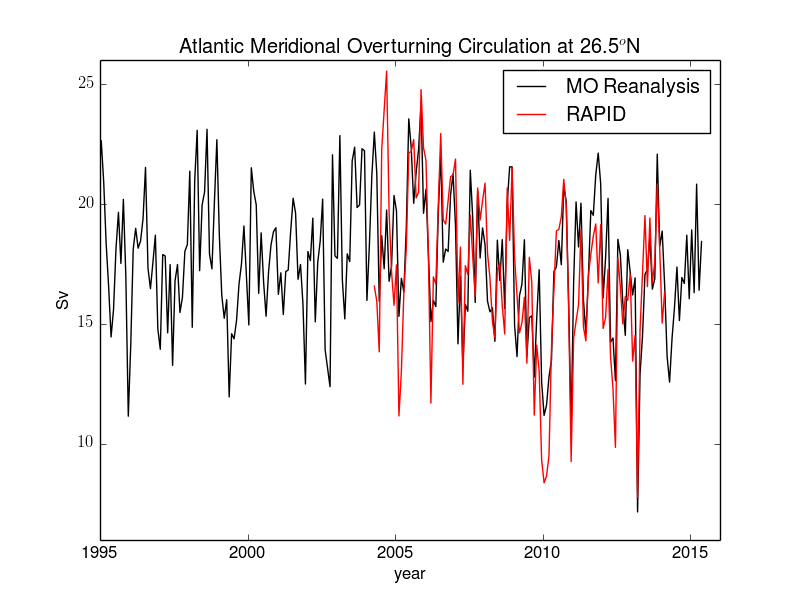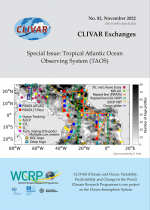Recent slowing of Atlantic overturning circulation as a recovery from earlier strengthening

Observations of the Atlantic Meridional Overturning Circulation (AMOC) have revealed a substantial weakening of the circulation since the start of the observations in 2004 (http://www.rapid.ac.uk/rapidmoc/). Global Climate Models (GCMs) project a weakening of the AMOC over the 21st century in response to increasing greenhouse gases, however they also show variability on decadal and multidecadal timescales. Ocean models forced by historical conditions often find an increase in the AMOC up to the mid-90s, followed by a decrease, but have not yet shown an agreement with the RAPID data. Hence it is unclear whether the observed weakening over the past decade is part of decadal variability or a persistent weakening.
A recent study from scientists at the UK Met Office presents a new ocean ‘reanalysis’ that combines ocean and satellite observations since 1989 with a state-of-the-art eddy-permitting ocean model .Importantly, the RAPID observations are not assimilated, so they provide an independent test of the simulated ocean state. This reanalysis reproduces the observed decrease in the AMOC observed by the RAPID array since 2004, as well as its year-to-year variability. The reanalysis extends back before the start of the direct RAPID observations in 2004, and so allows us to put them into a longer-term context. The observed weakening of the AMOC at 26N is found to follow a strengthening of the circulation since the mid-1990s. This suggests that the recent weakening is part of decadal variability rather than evidence for a longer-term decline.
The results of this study do not rule out the possibility that the observed weakening is a combination of decadal variability and a longer-term decreasing trend, as is projected by climate models in response to increasing greenhouse gases. Such a trend would only be detectable after more years of observations.
The research also shows a link between changes in the Atlantic overturning circulation and changes in density in the Labrador Sea several years earlier, with density anomalies seen propagating southwards along the western boundary. Continued monitoring of the Labrador Sea density may provide useful information about the future behaviour of the AMOC, however there remain many uncertainties around how the circulation might vary over the next decade. Although there are uncertainties over what might happen in the short term, the longer-term view is that a weakening of the circulation in the 21st century is still very likely as a result of increasing greenhouse gases.
Figure. Time series of AMOC strength at 26.5° N for the GloSea5 analysis (black) and the observations from the RAPID program (red)
Summary written by Laura C. Jackson.
Recent slowing of Atlantic overturning circulation as a recovery from earlier strengthening (Nature Geoscience)
Laura C. Jackson1, K. Andrew Peterson1, Chris D. Roberts1 and Richard A. Wood1
1 Met Office, Fitzroy Road, Exeter EX1 3PB, UK
(Published online on 23 May 2016)














